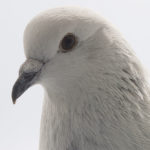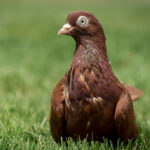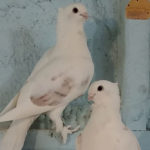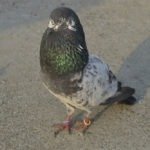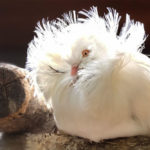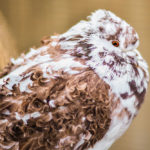Indian Fantails: The Basics
What is an Indian Fantail Pigeon? It’s a result of careful genetic modification by humans through selective breeding, for one thing.
Like all modern pigeons, it’s a descendant of the original rock dove, but its selective breeding also makes it a breed of fancy pigeon.
Indian Fantails: The History
Don’t be deceived by the name. The Indian Fantail is not an American native bird.
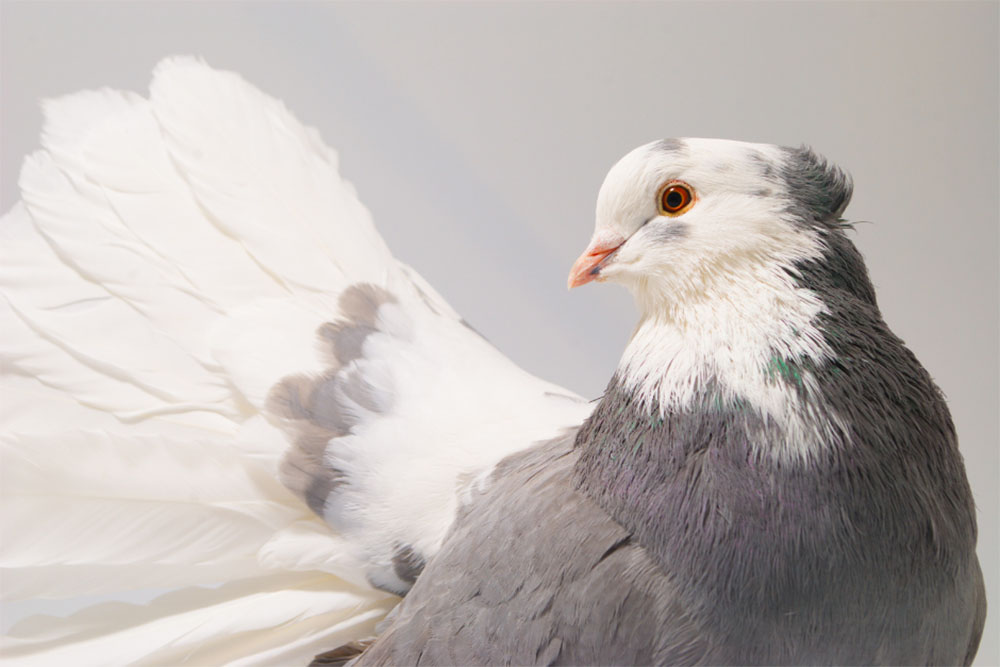
In fact, it’s not a natural native bird anywhere – it was specifically bred to bring out certain characteristics, but the Indian in the Indian Fantail refers to the country of India, rather than the unfortunate misnaming of indigenous Americans.
Fantails as a breed are one of the oldest fancy pigeons in the world, dating back to at least 1150AD, when records of them were made in Spain.
The Indian Fantail in particular is a practical teenager by comparison, dating back to 1560 AD, naturally enough in India.
And in the modern era, there are two main branches of the Fantail family – the American, and the Indian (Yes, the irony isn’t lost on us).
The Indian Fantail though was bred both in the United Kingdom and in the US, so now, just for extra fun and confusion, there are American Indian Fantails and British Indian Fantails.
Indian Fantails: The Spotter’s Guide
If you’re going to go looking for a fantail, or wondering whether the bird you’ve just seen is a fantail, naturally enough, the first tell-tale giveaway is the tail… shaped like a fan.
Why focus on such a detail? Because it really does set the fantail apart from other members of the pigeon family, that’s why.
Most pigeon tailfeathers amount to somewhere in the region of 12-14 feathers clumped together.
The fantail’s tail feathers can be anything from 30-40 feathers in a frankly fabulous array. It’s an arrestingly different detail that you won’t miss.
If you’re looking for the Indian Fantail in particular, it’s a mid-sized bird, usually larger than other fantail varieties.
The fully-grown bird can weigh anything between 12-13 ounces, and can grow up to around 11 inches.
You’ll probably be able to identify Indian Fantails because they’re generally larger than American Fantails, and they also have crests on their head and feathered feet by which you can immediately differentiate the sub-breeds.
There are postural things to look out for, too – they walk on their toes, with their chests up, while the splendid fantail feathers create a kind of ‘cushion’ on which they rest their heads.
It’s a combination that makes the chest seem very prominent, and often – which is naturally weird – higher than the head.
Again, as a giveaway, the Indian Fantail’s crest will let you know instantly it’s not an American Fantail.
Indian Fantails: The Coloring
Identifying an Indian Fantail by color used to be a simple matter – they were most usually white and tan.
Relatively recently – as might be expected for a bird whose very existence is an homage to selective breeding – breeders have selected for whole new rangers of color, including black, red, tallow and silver.
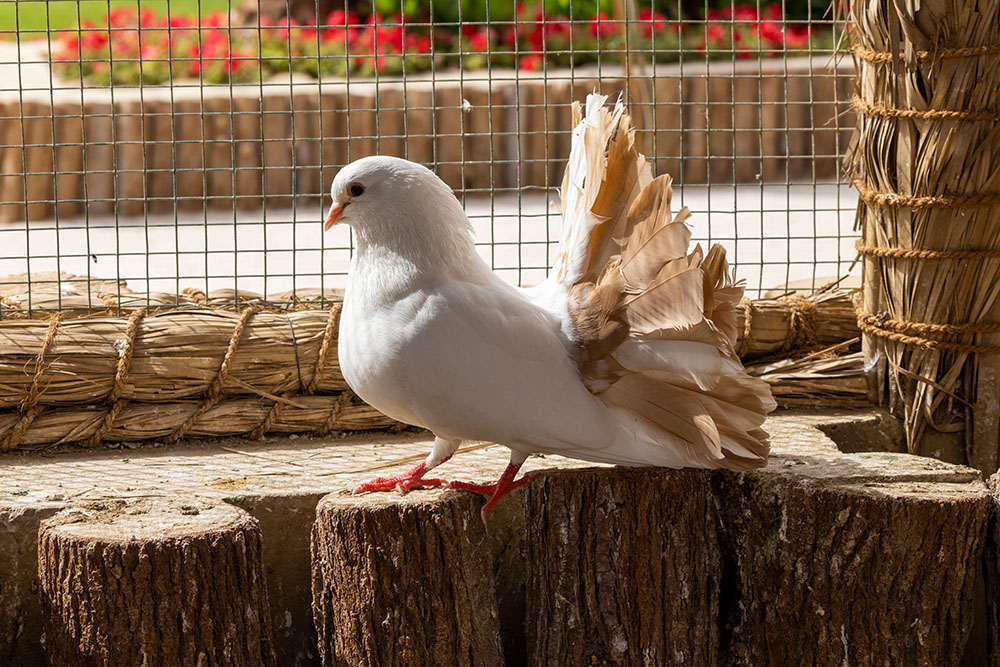
You can also get fantails that are mostly traditional, white and tan, but which have splashes of more exotic color too.
For the most part, if it looks like an Indian Fantail, it will still be white and tan – but be aware that other colors are now available.
Indian Fantails: The Characteristics
One of the things that makes Indian Fantails so popular is that they generally have a calm and chilled-out disposition.
That makes them relatively easy to tame and to train.
Whether you’re raising Indian Fantails as pets or for show, they tend to be easygoing birds to have at home, and they’re pretty relaxed in both warmer and cooler climates.
They’re also pretty good value for your initial outlay – unless you do anything egregiously stupid, you can expect to have an Indian Fantail for anything from 10-20 years.
Not by any means bad going for a pigeon.
That said, it’s worth keeping an eye on them, because with the large, showy tailfeathers and the upraised chest, they’re about as aerodynamic as an untied balloon, so flight is not their favorite thing.
That means potential predators from the domestic cat to some larger birds tend to look on them as a tasty lunch.
The boisterous tailfeathers – and the feathered feet too – can also interfere in some other standard pigeon behaviors, from feeding to breeding.
So, just as bred-to-be-that-way Pekinese is a dog that needs a degree of pampering to make up for its selected traits, so the Indian Fantail needs extra looking-after to make up for its inability to easily do the things many pigeons take for granted.
Indian Fantails: Breeding
Indian Fantail breeding is not for either the impatient or the reckless.
As mentioned, the breed sometimes finds breeding a challenge, given the splendor of their tailfeathers.
You’re going to need to take extra care in getting some environmental factors just so if you want to help them make baby Indian Fantails.
A calm environment actually helps encourage Indian Fantails to mate.
Using a (no pressure!) breeding box is one way to go, but you can get similar results by simply separating the potentially mating pair in a cage by themselves can help you get similar results.
We almost hate to say this, because an Indian Fantail is an Indian Fantail, but at mating time, actually cutting back some of the tailfeathers can help, because the cloaca – the vital area in mating – is covered by the tailfeathers, and may not be correctly exposed naturally.
Indian Fantails: Incubation & Parenting
If you can get them to mate at all, you’re looking at 10 days or so before the female lays a clutch of two or three eggs.
The female will incubate the eggs until they hatch, and then, around 4-6 weeks later, the hatchlings will start to fledge.
Indian Fantails can be somewhat indifferent parents, so you may need to get other birds with more nurturing instincts to step in and take care of the needs of the newborns.

